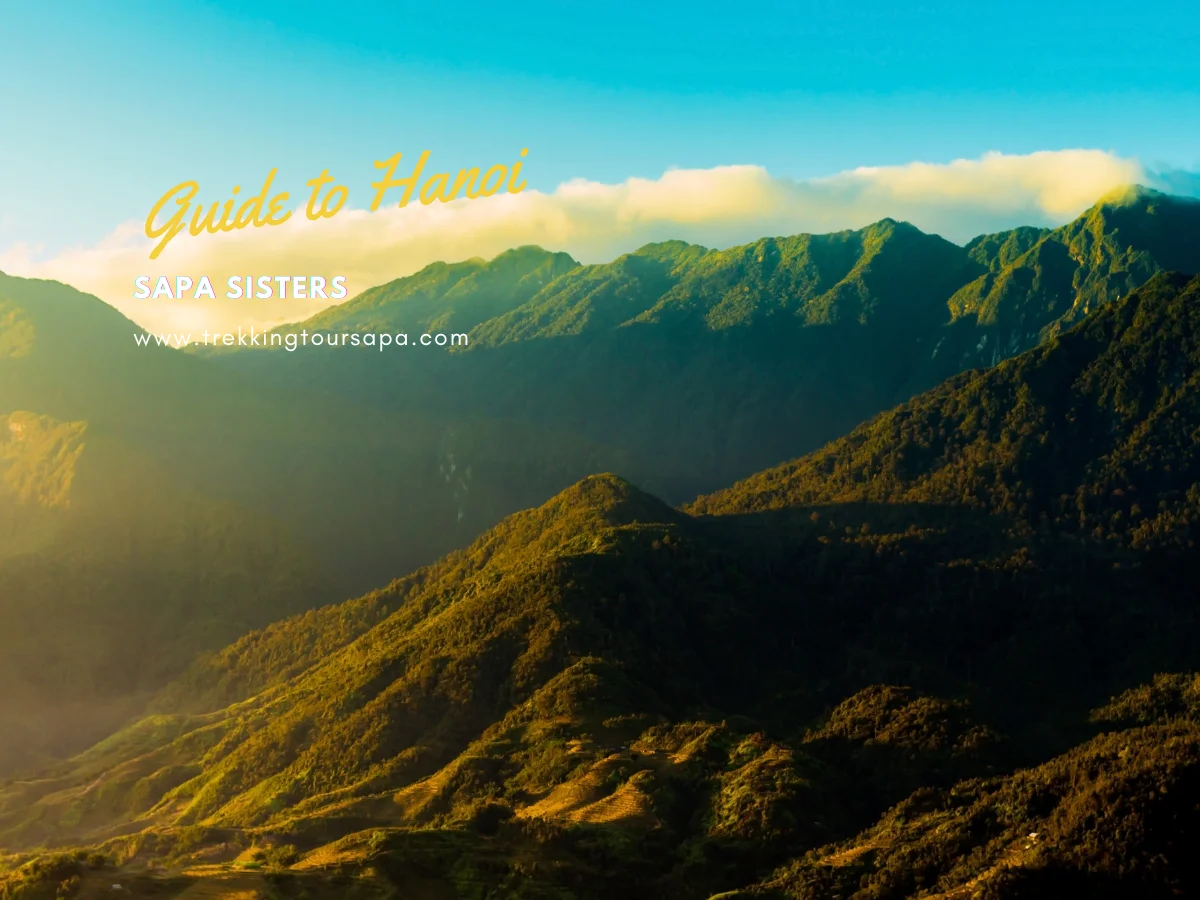At Sapa Sisters, we’re all about empowering women from the Hmong ethnic minority. They live in the breathtaking mountains of Vietnam. Our community-based tourism project is a light of hope for them.
It lets local women become guides and share their culture. They earn a steady income this way. By supporting Sapa Sisters, we help these amazing women and learn about their traditions.
Key Takeaways
- Sapa Sisters promotes female leadership in tourism.
- Local women are empowered through guiding and income opportunities.
- The initiative fosters cross-cultural understanding.
- Sapa is a stunning destination in Vietnam, second only to Halong Bay.
- Tourism supports education and creates job opportunities for Hmong youth.
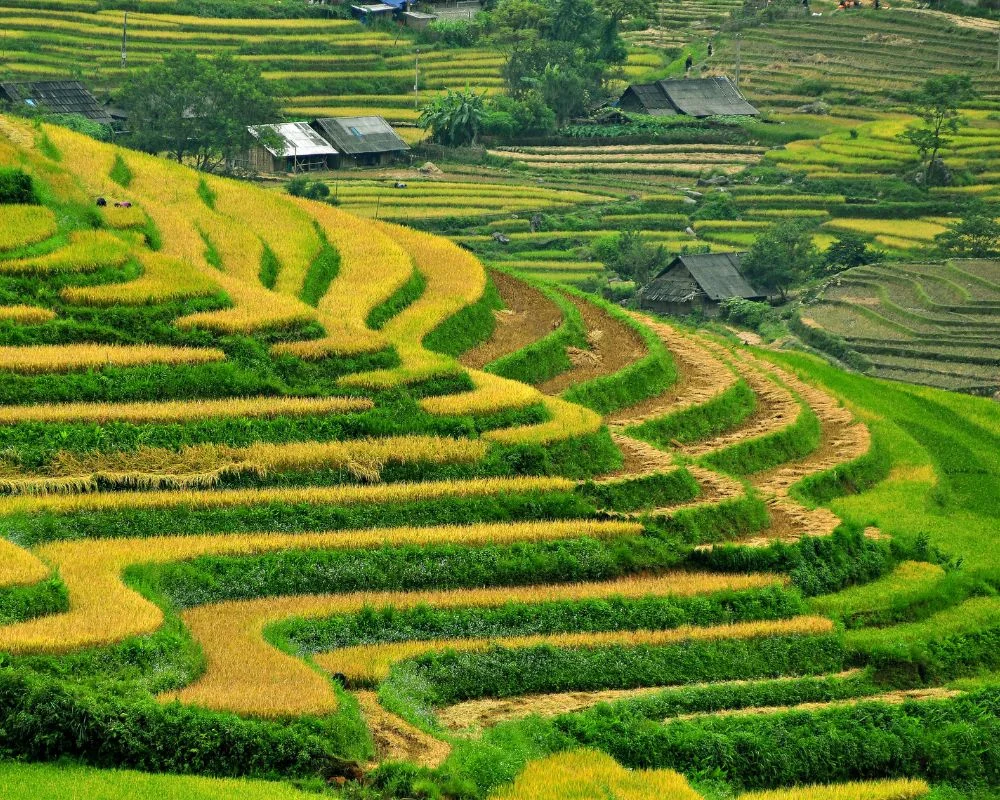
Table of Contents
ToggleIntroduction to Sapa and Its Ethnic Minorities
Sapa is a beautiful mountain town in Vietnam’s northwest. It attracts visitors with its stunning views and rich culture. The area is home to many ethnic minorities, like the Hmong, Red Dao, and Tay. These groups make Sapa’s tourism experiences special.
In Vietnam, the Kinh people make up 85.7% of the population. The remaining 14.3% is spread across over 54 ethnic groups. In Sapa, the Hmong are the largest group, with 52% of the population. The Dao, Tay, and Giay make up 25%, 5%, and 2%, respectively.
Each ethnic group has its own customs and traditions. The Hmong have a unique “zij” marriage ceremony. The Red Dao are known for their colorful stilt houses and clothes. The Tay wear blue for special occasions, and the Giay have colorful blouses and indigo trousers.
Locals often wear silver jewelry, which is important to many communities. Sapa’s food scene is influenced by southern Chinese cuisine. You’ll find sticky rice, fresh veggies, and buffalo meat everywhere.
Traditional farming still supports these communities, but tourism is growing fast. It’s crucial to keep Sapa’s culture alive while welcoming more visitors. This balance is key to preserving Sapa’s unique charm.
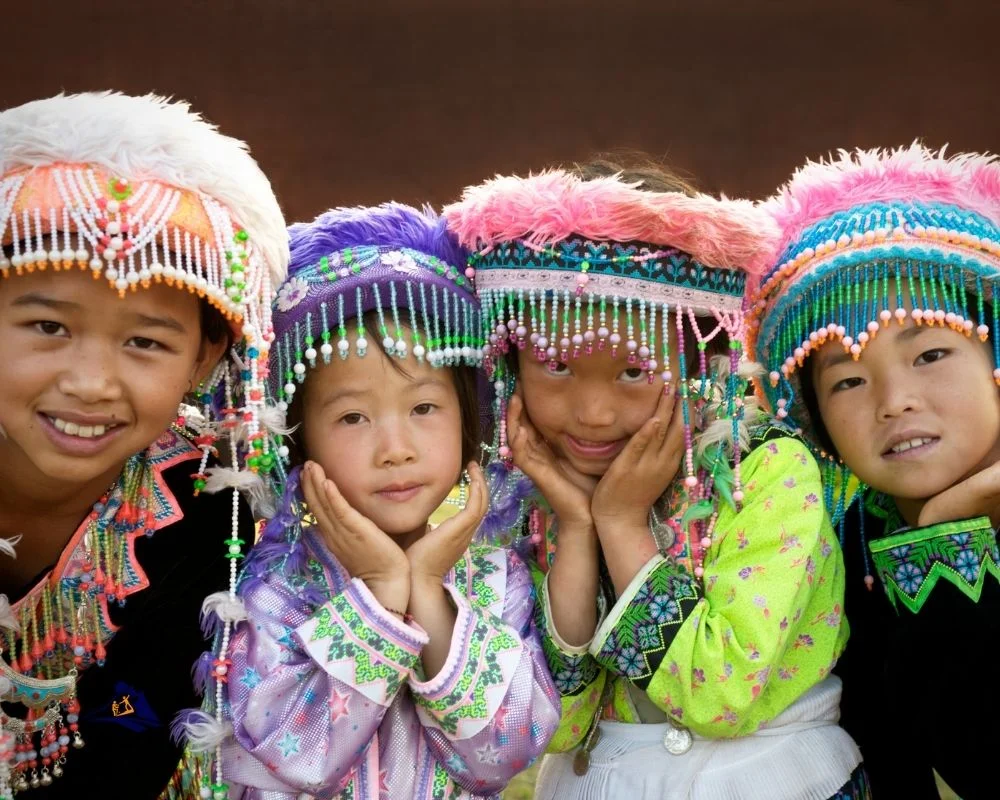
The Role of Sapa Sisters in Community-Based Tourism
The Sapa Sisters play a big role in community-based tourism. They make sure visitors see the area’s rich culture. Local Hmong women guides take trekkers through beautiful landscapes.
They also help with cultural exchanges. Visitors get to see how village life works. They learn about the traditions and daily life of the local communities.
More and more tourists are coming to Sa Pa. In 2003, there were 70,000 visitors. By 2019, that number jumped to 3.2 million. This growth has brought more jobs for locals, improving their lives.
The Sapa Sisters are key in this change. They show off their heritage and earn a good income. This is thanks to tourism.
Tourism has also helped with language skills. Many ethnic women in Ta Van and Sa Pa learn English. This helps them communicate better with travelers.
It also boosts their confidence. They can share their culture with visitors.
- Supporting the local community through cultural exchange
- Offering authentic experiences that prioritize local traditions
- Creating new skills and job opportunities for ethnic women
As tourism grows in Sa Pa, the Sapa Sisters show how to balance economic gain and cultural preservation. By choosing community-based tourism, visitors help local communities. They also help keep the region’s unique identity safe.
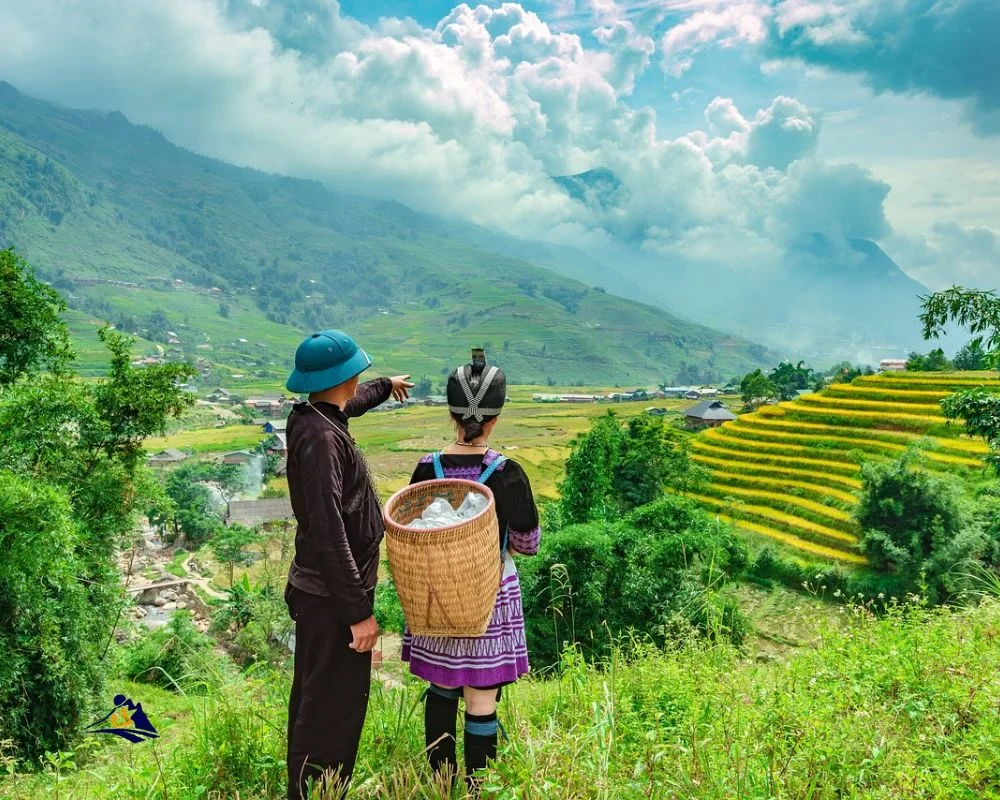
Understanding Hmong Culture in Vietnam
The Hmong culture is rich and vibrant. It has unique traditions and practices passed down through generations. Traditional textiles are a big part of this, showing cultural significance and identity.
The Rich Traditions of Hmong Textiles
Traditional textiles are key in Hmong culture. They show intricate designs and patterns. Each piece tells a story, showing the Hmong people’s history and heritage.
Girls learn these skills from a young age, starting at eight. Workshops, like those by the Sapa Sisters, let us see how these textiles are made. For example, Batik involves melting wax and dyeing indigo, showing the art and tradition in each design.
The Significance of the Hmong Language
The Hmong language is vital to the community’s identity. It’s used for storytelling, rituals, and daily talks. As tourism grows, Hmong women are learning English, helping them connect with travelers.
This exchange deepens our understanding of their culture. Talking to local guides who speak Hmong makes our trip more meaningful. To learn more about Hmong life and their stories, check out this insightful article.
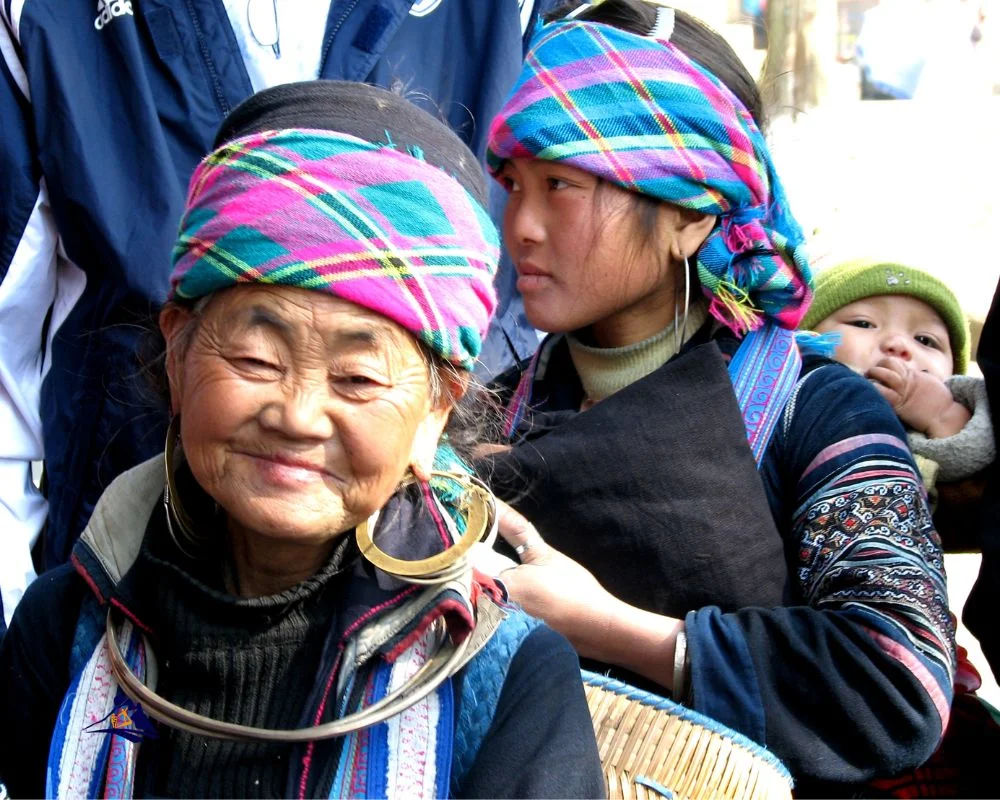
Exploring Hill Tribe Tours in Sapa
Going on hill tribe tours in Sapa is a great way to dive into local culture. With so many options, we can pick the best tour for us. This lets us truly connect with the people and support the environment.
Each trek and homestay is a chance to learn about the traditions of the ethnic minorities. This part of Vietnam is truly breathtaking.
Choosing the Right Tour Experience
When planning our Sapa adventures, we can choose from many trekking packages. For example, the Sapa Sisters Trekking Adventures offers a two-day trek. It costs £109.60 per person and can save us up to 19%.
This package includes:
- A night in a traditional homestay
- Farm-to-table cooking with local ingredients
- Cultural exchange with host families
- Shared loft accommodations, hot showers, and western toilets
- Transportation from Hanoi
Each group is limited to 10 people, ensuring a personal experience. We’ll see waterfalls, lush landscapes, and the Hmong people’s hospitality. Being fit helps enjoy the trek, especially on steep slopes.
Sapa 1 Day Tours
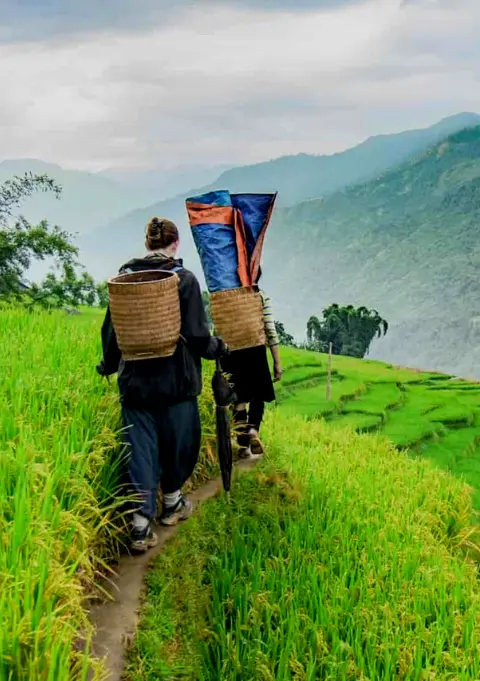
- 1 day experience
- Moderate to challenging
- Cultural immersion & active adventure
- Rice fields, valleys & villages
- Private tours
- Vegan-friendly
Sapa 2 Day Tours
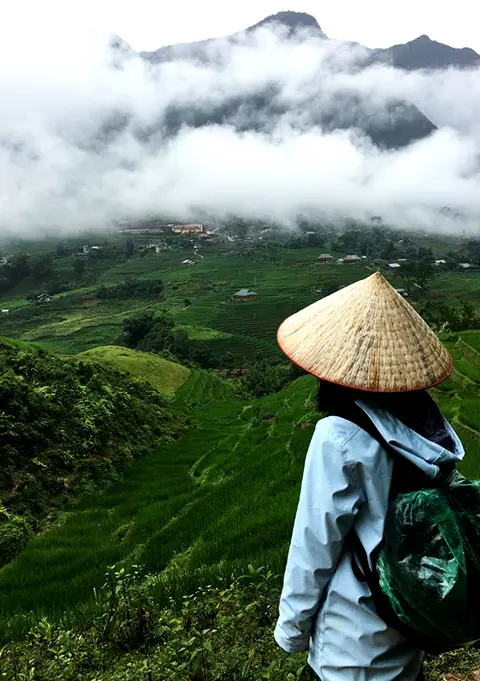
- 2 days 1 night experience
- Moderate to challenging
- Cultural immersion & active adventure
- Mountains, valleys, rice fields and villages
- Private tours
- Vegan-friendly
Sapa 3 Day Tours
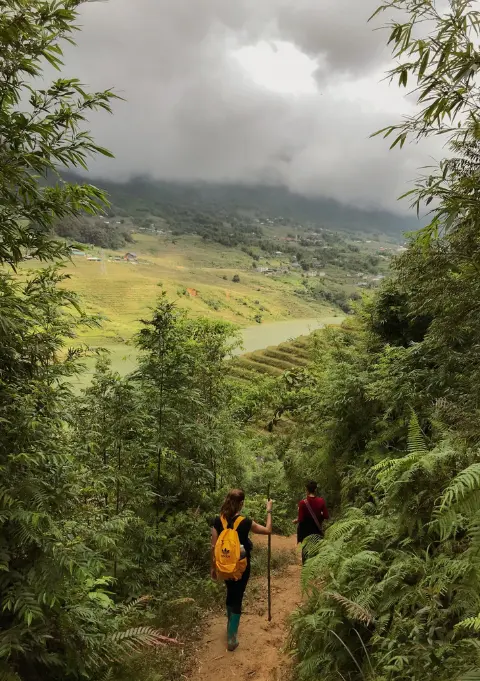
- 3 days 2 night experience
- Moderate to challenging
- Cultural immersion & active adventure
- Mountains, valley, rice fields & villages
- Private tours
- Vegan-friendly
Sapa 4 Day Tours
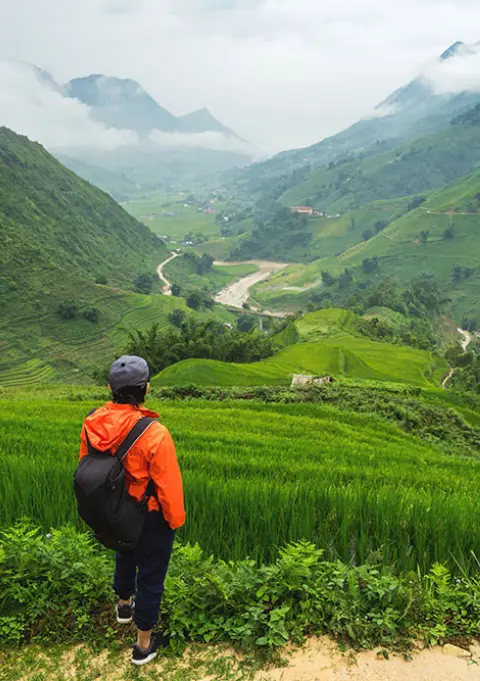
- 4 days 3 night experience
- Moderate to challenging
- Cultural immersion & active adventure
- Mountains, valleys, rice fields & villages
- Private tours – Less Touristic
- Vegan-friendly
Benefits of Eco-Tourism in Sapa
Eco-tourism in Sapa lets us see stunning natural beauty while caring for the environment. It promotes responsible travel that protects the landscape and helps local communities. By choosing female-led social enterprises like the Sapa Sisters, we support local expertise and conservation.
Every step we take helps preserve Sapa’s culture and nature. Sapa and its hill tribe communities invite us to explore, learn, and connect.
| Feature | Details |
|---|---|
| Duration | 2 Days |
| Price | From £109.60 per person |
| Accommodation | Traditional homestay with loft sleeping quarters |
| Activities | Farm-to-table cooking, cultural exchange |
| Group Size | Max 10 participants |
| Cancellation Policy | Flexible up to 24 hours in advance |
Rice Terrace Trekking Adventures
Rice terrace trekking in Sapa is a thrilling adventure for those who love nature and culture. It lets us see amazing landscapes made by ancient farming ways. As we walk these terraces, we see stunning views and learn about the area’s farming history.

The Sapa Sisters Trekking Adventures offer a two-day trek for £109.60 per person. The routes show off terraced fields, waterfalls, and green forests. Roundtrip transport from Hanoi makes it easy, and groups stay small for a cozy feel.
Accommodations are in a traditional homestay with shared rooms and modern comforts like hot showers. Meals are made from local ingredients, showing off the area’s food traditions. Guests can also learn about local life by talking with host families.
Hiking trails are about 12-15 km each day, with options for all skill levels. The best time to go is from December to June, especially March to May. Whether you’re looking for a challenge or a relaxed walk, Sapa’s rice terraces have something for everyone. It’s a great way to connect with nature and the local culture.
Sapa Sisters: Empowering Local Women
The Sapa Sisters initiative is key in boosting the economic status of Hmong women in Sapa. It offers jobs as guides and homestay hosts. This way, women earn money that helps their families and communities.
This empowerment changes traditional gender roles. It brings independence to Hmong women. They make big strides in improving their lives.
The Economic Impact on Hmong Women
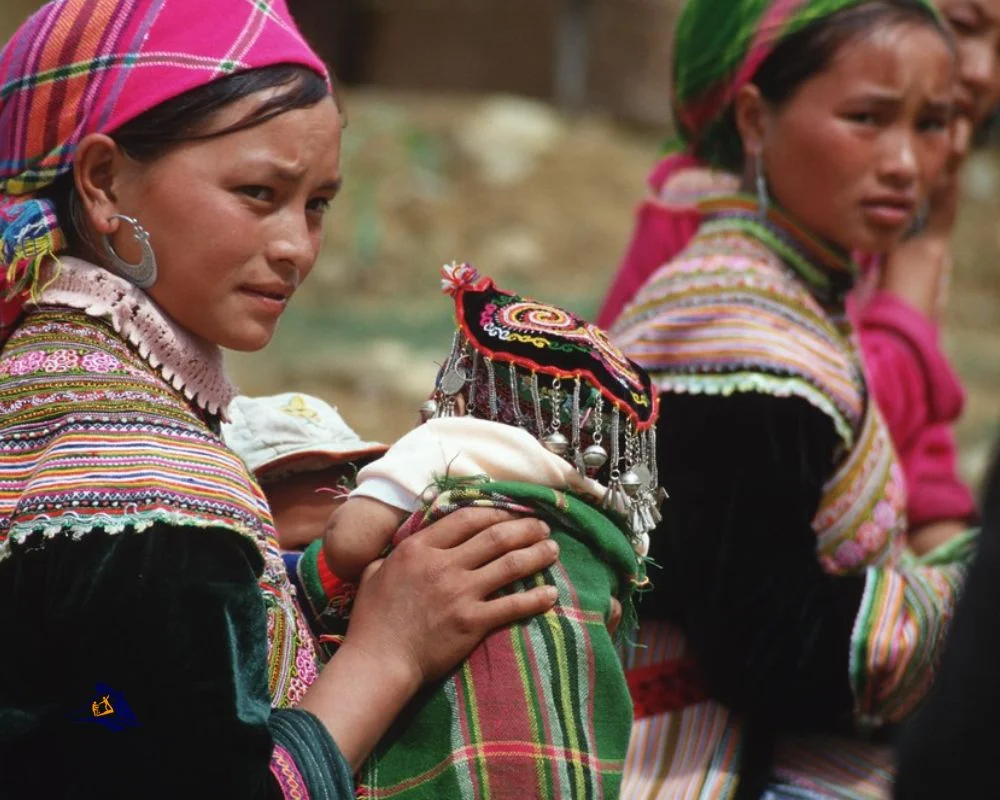
Community-based tourism has a big impact on Hmong women’s lives. They earn money from guiding and hosting tourists. This money goes into education and healthcare.
In the Black Hmong community, women use their earnings for school fees. This improves their children’s education. It also helps reduce economic gaps in places like Ta Van, where costs have risen with tourism.
Staying with local families costs just $8 a night. This helps families thrive on their own, not just through tour companies. It also lets visitors connect deeply with local guides.
Stories from Local Guides
Local guides share stories of resilience and adaptability. They face challenges in keeping their culture alive while meeting tourist needs. Their stories show the strength and determination of the Sapa Sisters.
Visitors gain a true understanding of Hmong culture through these women. They learn through real interactions, not just tours. This enriches their travel experience and supports Hmong women’s empowerment.
| Aspect | Impact on Hmong Women |
|---|---|
| Employment as Guides | Provides income and fosters independence |
| Homestay Hosting | Direct benefits to families, fostering sustainability |
| Community-Based Tourism | Enhances education opportunities, reduces poverty |
| Personal Connections | Encourages cultural exchange and supportive networks |
Sapa 1 Day Tours

- 1 day experience
- Moderate to challenging
- Cultural immersion & active adventure
- Rice fields, valleys & villages
- Private tours
- Vegan-friendly
Sapa 2 Day Tours

- 2 days 1 night experience
- Moderate to challenging
- Cultural immersion & active adventure
- Mountains, valleys, rice fields and villages
- Private tours
- Vegan-friendly
Sapa 3 Day Tours

- 3 days 2 night experience
- Moderate to challenging
- Cultural immersion & active adventure
- Mountains, valley, rice fields & villages
- Private tours
- Vegan-friendly
Sapa 4 Day Tours

- 4 days 3 night experience
- Moderate to challenging
- Cultural immersion & active adventure
- Mountains, valleys, rice fields & villages
- Private tours – Less Touristic
- Vegan-friendly
Homestay Experiences with Local Families
Choosing homestay experiences with local families in Sapa lets us deeply connect with Hmong culture. These stays offer a unique chance for cultural immersion. We learn directly from our hosts about their daily lives, customs, and traditional practices.
We receive warm hospitality and enjoy home-cooked meals. These meals reflect the rich culinary heritage of the region.
What to Expect During Your Stay
During our time in a homestay, simple comforts await us. Guests share large loft-style sleeping quarters that promote a sense of community. The facilities include hot showers, western toilets, and mosquito nets for a pleasant experience.
Engaging in household chores gives us insights into local families’ routines. Participating in storytelling and traditional activities enriches our understanding of their culture.
Supporting Women through Homestays
Opting for homestays facilitated by women-led initiatives like those offered by Sapa Sisters significantly contributes to empowerment. By staying with these local families, we support the economic independence of women.
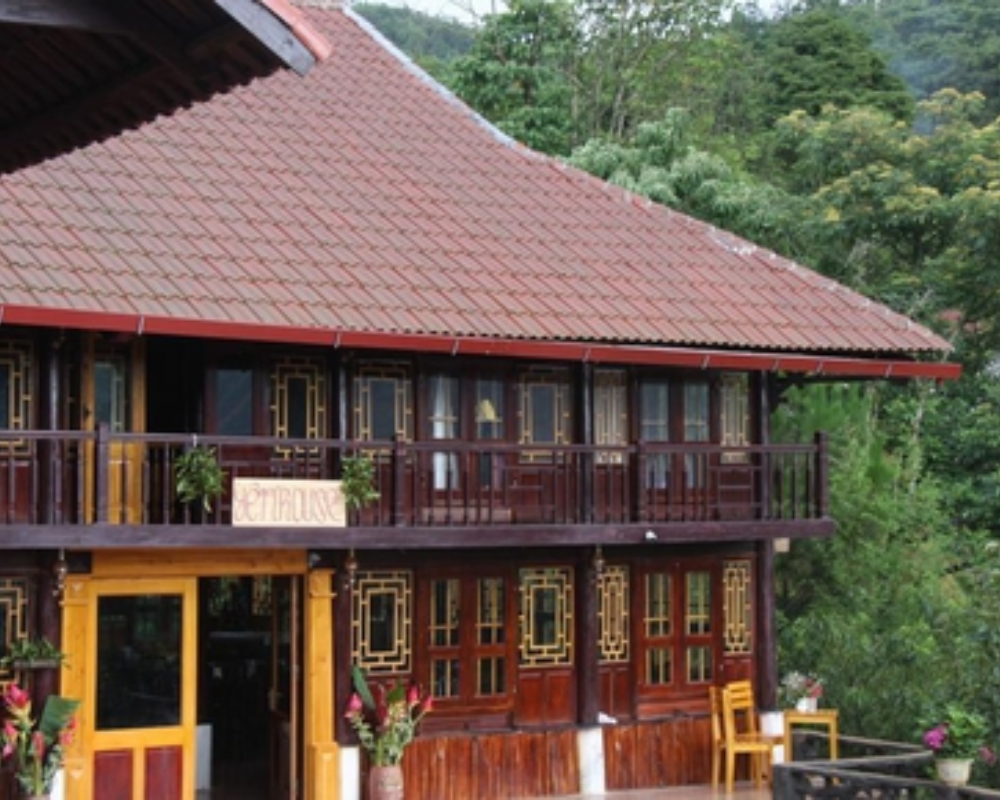
These women showcase their cultural heritage while running successful homestay operations. This choice fosters gender equality within the community. It encourages local women to take on leadership roles in business and decision-making processes.
| Feature | Details |
|---|---|
| Duration | 2 days/1 night |
| Group Size | Up to 10 participants |
| Cost | From £109.60 per person |
| Meals Included | 2 lunches, 1 dinner, 1 breakfast |
| Cultural Activities | Engaging in household chores, cooking, and storytelling |
| Cancellation Policy | Full refund if canceled up to 24 hours before the start time |
By choosing these homestay experiences, we don’t just enjoy captivating stays. We also play a part in enriching the lives of local families. We contribute to cultural preservation in Sapa.
Cultural Preservation amid Tourism Growth
In Sapa, the *cultural preservation* of local traditions is a big challenge and a great opportunity. With more tourists coming, it’s important to show heritage and keep it real. Visitors can sometimes harm old ways, but they also help keep traditions alive.
Groups like the Sapa Sisters are key in this balance. They help visitors learn about local customs in a respectful way. Activities like weaving or cooking classes let visitors see the beauty of Hmong culture and help preserve it.

We can help by choosing our travel wisely. Being careful about how we impact the local scene is important. By connecting with the Sapa community, we make our trip better and help keep their traditions alive for the future.
| Impact of Tourism Growth | Benefits for Cultural Preservation |
|---|---|
| Increased visitor numbers may dilute traditional customs. | Encourages local artisans to maintain unique crafts. |
| Pressure on natural resources and land use. | Promotes environmentally sustainable practices. |
| Potential for cultural commodification. | Fosters greater awareness and appreciation of local heritage. |
| Overtourism may lead to cultural barriers. | Facilitates cultural exchange and dialogue. |
By considering these points, we can help preserve Sapa’s culture while enjoying its beauty. Let’s be mindful tourists who enhance, not harm, the cultural identity of the places we visit.
Environmental Challenges in Sapa
Sapa is facing many environmental challenges, mainly because of too many tourists. The beautiful landscapes that draw visitors also cause big problems. These issues harm the ecosystem and local communities.
More people walking around means more pollution, less resources, and worn-out buildings. This messes up the natural balance in this area.
Impact of Overtourism

Too many tourists in Sapa is a big problem. It leads to more trash and water use, straining local resources. We need to be careful travelers and support green practices to save Sapa’s beauty.
Conservation Efforts by Local Communities
Local people in Sapa are fighting back against too many tourists. They’re working on keeping the land clean, reducing waste, and teaching eco-friendly habits. With help from groups like the Sapa Sisters, their efforts are getting stronger.
As visitors, we can help by choosing to travel responsibly. This way, we respect the environment and support the local culture. It’s all about making tourism better for everyone.
Muong Hoa Valley Hikes: A Must-Visit
The Muong Hoa Valley offers a breathtaking hiking experience in Sapa. It’s known for its stunning terraced fields and diverse ethnic communities. As we hike, we see majestic mountains, including Fansipan, the highest peak in Indochina.
Our hikes take us through villages like Lao Chai, Giang Ta Chai, and Ta Van. Each village shows a rich culture, letting us connect with the Hmong, Dao, and Giay people. We learn about their traditions and farming ways.
Two-day trekking adventures cover about 12-15 kilometers each day. We explore the valley’s beauty from 9 AM to 3 PM. With small groups of 10, we get close to the landscape and its people.
On our hikes, we might help gather fresh vegetables for our meals. Traditional homestays offer comfort and a taste of local life. Hiking in Muong Hoa Valley is an unforgettable experience, best from March to May and September to November. For more on the best times to visit, see this guide on when to visit Sapa.
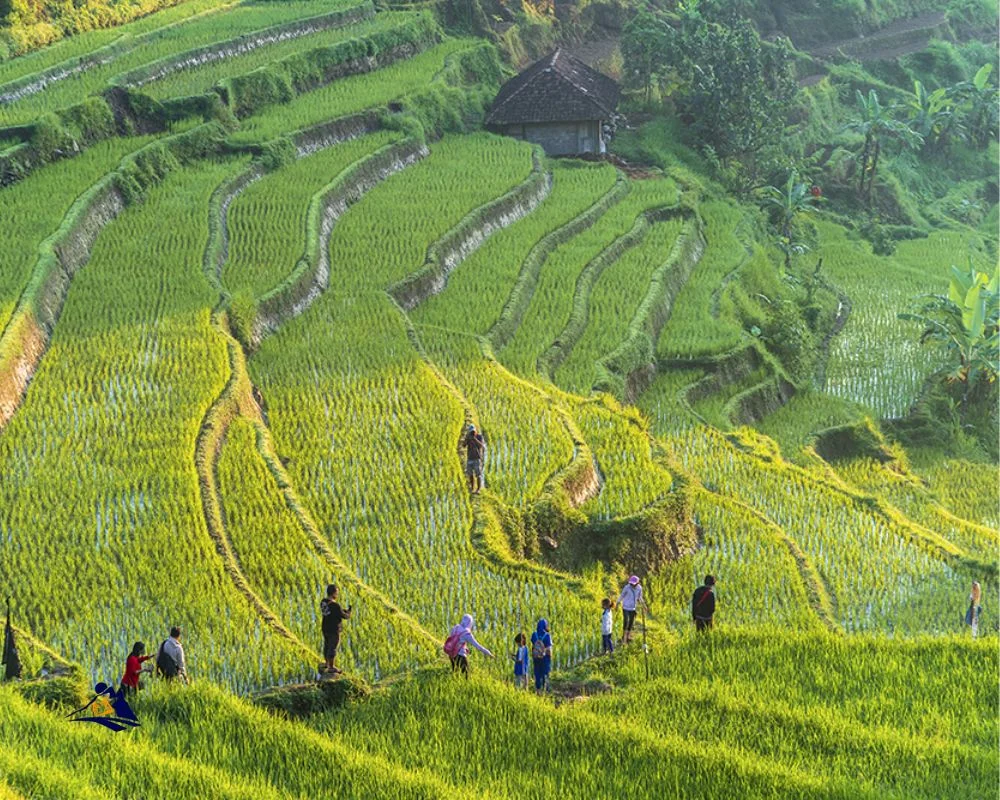
Building Skills and Education for Women in Sapa
In Sapa, skill-building and education for women are key to empowering local communities. As tourism grows, local women get chances to improve their skills and confidence. Language programs are especially important, helping women talk to tourists.
The Importance of Language Programs
Language programs are vital in Sapa. With millions of tourists coming, speaking English is crucial. Women in these programs learn to communicate better and connect with visitors.
This skill-building enriches travel experiences and empowers women. They can share their stories and culture, making interactions meaningful.
Access to Education Resources
Education resources are key to empowering women in Sapa. Many women seek out educational chances to better their lives. Training programs, materials, and scholarships help them.
Organizations that provide these resources are crucial. They help shape better futures for women and their families, benefiting the whole community.
| Initiative | Description | Impact |
|---|---|---|
| Language Programs | Courses aimed at teaching English to local women | Improved communication skills, increased confidence |
| Training Workshops | Skill development in hospitality and tourism-related services | Enhanced employability and community engagement |
| Scholarship Opportunities | Support for women pursuing higher education | Breaks the cycle of poverty, promotes social mobility |
Sapa 1 Day Tours

- 1 day experience
- Moderate to challenging
- Cultural immersion & active adventure
- Rice fields, valleys & villages
- Private tours
- Vegan-friendly
Sapa 2 Day Tours

- 2 days 1 night experience
- Moderate to challenging
- Cultural immersion & active adventure
- Mountains, valleys, rice fields and villages
- Private tours
- Vegan-friendly
Sapa 3 Day Tours

- 3 days 2 night experience
- Moderate to challenging
- Cultural immersion & active adventure
- Mountains, valley, rice fields & villages
- Private tours
- Vegan-friendly
Sapa 4 Day Tours

- 4 days 3 night experience
- Moderate to challenging
- Cultural immersion & active adventure
- Mountains, valleys, rice fields & villages
- Private tours – Less Touristic
- Vegan-friendly
Traditional Textile Weaving Techniques
Exploring traditional textile weaving in Sapa’s Hmong community is a journey into vibrant culture. We see how beautiful textiles are made and the stories they hold. Workshops for travelers offer hands-on learning and a peek into generations of artistry.
Workshops and Learning Opportunities
Textile weaving workshops let us connect with local artisans. We dive into traditional methods for making Hmong textiles. Many get to work with hand-spun hemp, a skill that’s evolved with modern times.
Artisans, both men and women, show off their impressive skills. This heritage is rich and vital to the Hmong community.
In these workshops, we learn about different Hmong textile art forms. For example:
- Paj Ntaub or flower cloth, which showcases intricate embroidery techniques exclusive to women.
- Hmong batik, created using beeswax, indigo dye, and white hemp fabric, revealing the unique artistry of this method.
- Story cloths that narrate legible tales through vivid imagery, combining both figurative and geometric elements.
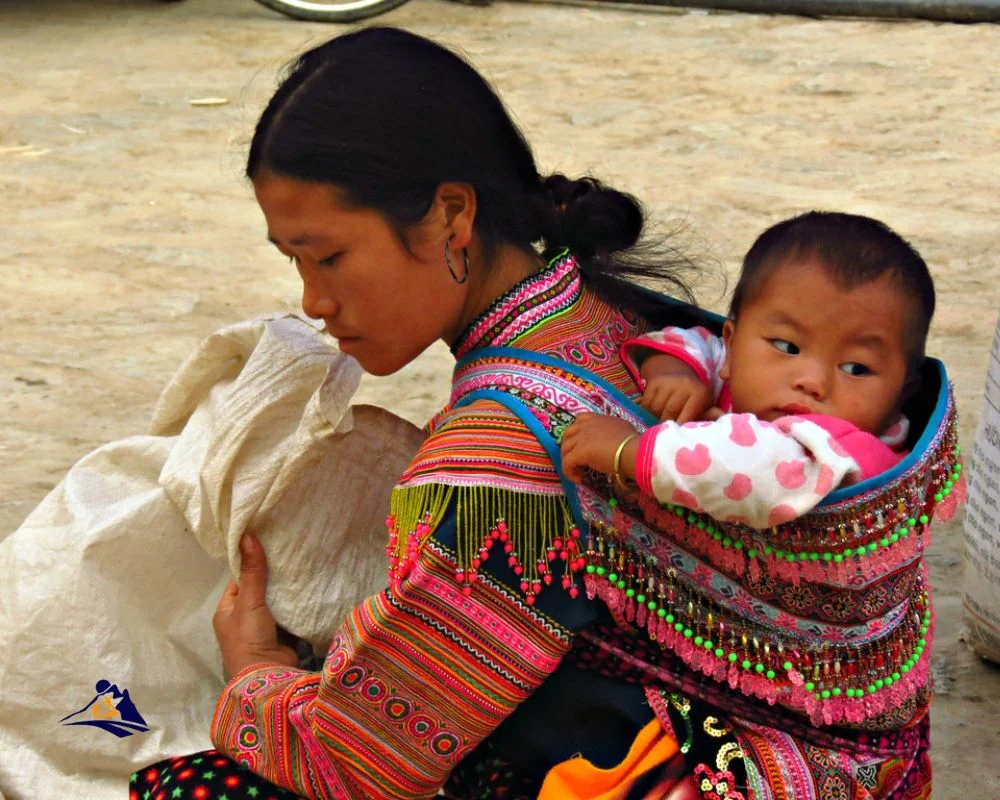
These activities deepen our understanding of the craft and support its survival. By joining workshops, we help keep the Hmong people’s cultural identity alive.
| Technique | Description | Cultural Significance |
|---|---|---|
| Hmong Batik | Using beeswax and indigo dye on white hemp fabric. | Symbolizes community traditions and storytelling. |
| Paj Ntaub | Embroidery unique to women, featuring floral motifs. | Represents identity, spiritual beliefs, and artistic expression. |
| Story Cloths | Textile art that narrates stories through pictures and patterns. | A form of educational storytelling for the Hmong culture. |
Learning and participating in these workshops celebrates Sapa’s textile weaving heritage. Each thread has a story, deepening our respect for traditional crafts. These experiences help us connect with the Hmong community, ensuring their traditions live on.
Discovering Red Dao Villages
Visiting the Red Dao villages is a chance to dive into a world of cultural richness. Ta Phin village, about 13 km from Sapa, is home to the Dao people. They are known for their colorful traditional clothes and interesting customs.
The best times to visit Sapa are late summer and early spring. These seasons offer perfect weather to see the terraced fields, caves, and unique village architecture. The Ta Phin Cave is a highlight, standing at 5 meters high and 3 meters wide.
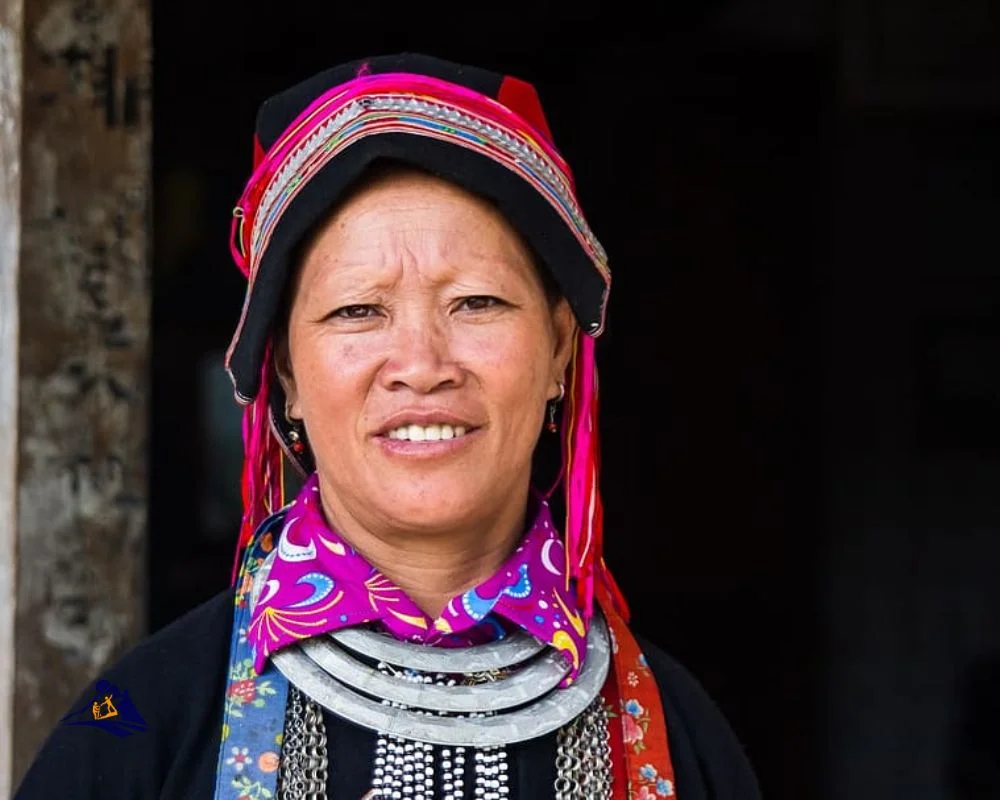
Traditional herbal baths are a must-try. The Red Dao use over 120 types of leaves for these baths. It’s a refreshing experience for just 150,000 VND. Interacting with locals makes our visit more meaningful and supports the local economy.
Exploring Red Dao villages reveals their community rituals and cooking methods. This journey celebrates the Red Dao heritage. It’s a must for those seeking real cultural experiences in Sapa.
For more on local culture and trekking, check out this guide.
Conclusion
Reflecting on our time in Sapa with the Sapa Sisters, we see how cultural tourism helps local communities. It especially benefits women from ethnic minorities. By traveling responsibly, we dive into their heritage and help their future.
Every trek through Sapa’s landscapes reminds us of our duty. We support economic growth and cultural preservation. Our experiences, like exploring rice terraces or staying in homestays, show us the beauty of mountain life.
It’s the connections with local guides and families that truly make our travels special. The Sapa Sisters’ stories teach us to be mindful travelers. They encourage us to support the voices of those in this magical region.
We’re inspired to make thoughtful choices in our adventures. Let’s pick paths that respect and support local cultures. With every step in Sapa, let’s aim to empower women and create unforgettable memories.
Sapa 1 Day Tours

- 1 day experience
- Moderate to challenging
- Cultural immersion & active adventure
- Rice fields, valleys & villages
- Private tours
- Vegan-friendly
Sapa 2 Day Tours

- 2 days 1 night experience
- Moderate to challenging
- Cultural immersion & active adventure
- Mountains, valleys, rice fields and villages
- Private tours
- Vegan-friendly
Sapa 3 Day Tours

- 3 days 2 night experience
- Moderate to challenging
- Cultural immersion & active adventure
- Mountains, valley, rice fields & villages
- Private tours
- Vegan-friendly
Sapa 4 Day Tours

- 4 days 3 night experience
- Moderate to challenging
- Cultural immersion & active adventure
- Mountains, valleys, rice fields & villages
- Private tours – Less Touristic
- Vegan-friendly
